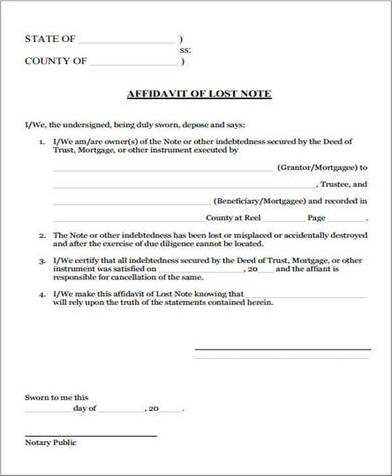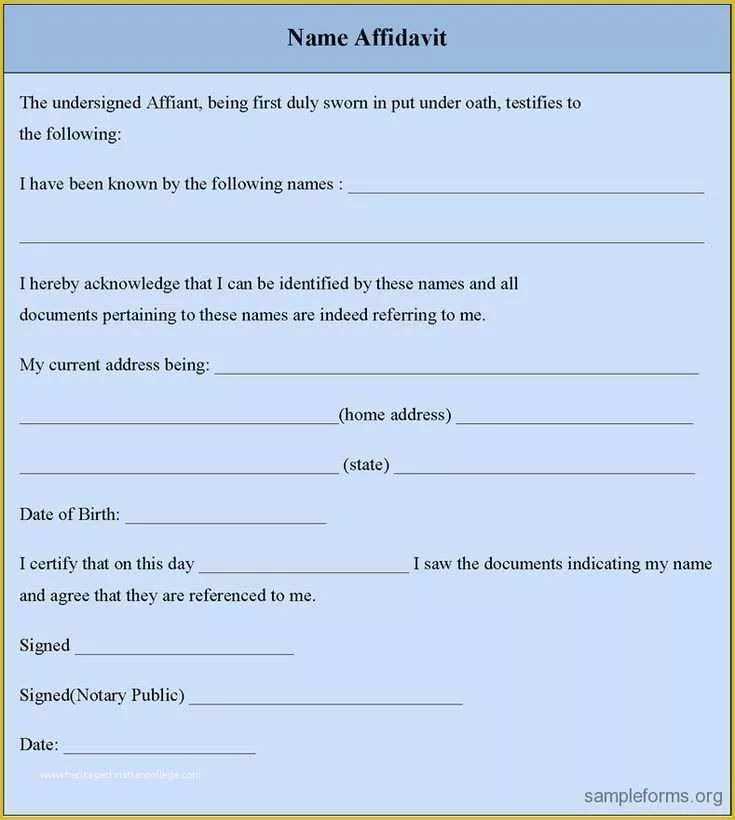
A receipt affidavit is a formal statement confirming the receipt of goods, services, or funds. It serves as proof of transaction and may be required for various legal, financial, or business matters. Here’s a basic template for creating your own receipt affidavit.
Key Elements to Include

The following sections should be present in every receipt affidavit:
- Affiant’s Information: Full name, address, and contact details.
- Recipient’s Information: The individual or entity receiving the payment, goods, or services.
- Date and Time: When the receipt was issued.
- Description of Items/Services: Detailed list of the goods or services received.
- Amount: The amount of money, if applicable.
- Signatures: Signatures of both parties involved to confirm receipt.
Template

Affidavit of Receipt
I, [Full Name], residing at [Address], hereby affirm that I received the following:
1. [Item/Service Description] – Quantity: [Number] – Value: [Amount]
2. [Item/Service Description] – Quantity: [Number] – Value: [Amount]
The items/services were received on [Date] from [Recipient's Name] at [Location].
This affidavit is signed by both parties as a true record of the transaction.
Affiant's Signature: ___________________________
Date: ___________________
Recipient's Signature: ________________________
Date: ___________________
Sworn to before me this [Day] of [Month], [Year].
Notary Public Signature: _______________________
Ensure all information is accurate. This template should be adjusted to suit the specific details of your transaction.
Additional Notes

- If the receipt involves money, include details like the form of payment (cash, check, credit, etc.).
- Have the affidavit notarized if required by local laws or business practices.
- Keep a copy for your records.
Receipt Affidavit Template: A Practical Guide
Understanding the Purpose of a Receipt Affidavit
Essential Elements to Include in Your Template
Steps to Create a Legally Binding Receipt Affidavit
Common Errors to Avoid When Preparing a Receipt Affidavit
How to Tailor the Template for Specific Transactions
Notarization and Legal Requirements for Validating the Affidavit
A receipt affidavit serves as an official statement confirming the transfer of money, goods, or services. It provides legal proof of the transaction and can be used to resolve disputes or clarify the terms of the exchange.
To ensure your template is practical, include these key elements: the full names and contact details of both parties, a detailed description of the goods or services exchanged, the total amount or value involved, the date of the transaction, and a clear statement that the transaction was completed without dispute. Additionally, include any terms or conditions agreed upon, as well as the signature of both parties to confirm their agreement.
Follow these steps to create a legally binding receipt affidavit: Begin by clearly outlining the details of the transaction. Next, include a section that states the affiant’s (the person making the affidavit) affirmation of the transaction. Finally, ensure both parties sign the affidavit in the presence of a notary, which adds legal weight to the document.
Common mistakes include omitting key details, such as the exact transaction date or parties involved, or leaving out a clause about the condition of the goods or services. Avoid vague language or incomplete information, as this can lead to confusion or legal challenges down the line.
Tailor the template to the specifics of each transaction. For instance, for property exchanges, include details about the property involved, while for loan agreements, list repayment terms. Adapt the template to reflect the nature of the exchange, ensuring all relevant details are captured.
Notarization is often required to validate the affidavit and add credibility to the statement. It is necessary for ensuring the document holds up in legal proceedings. Check local laws to confirm the notarization requirements in your jurisdiction, as they can vary.


